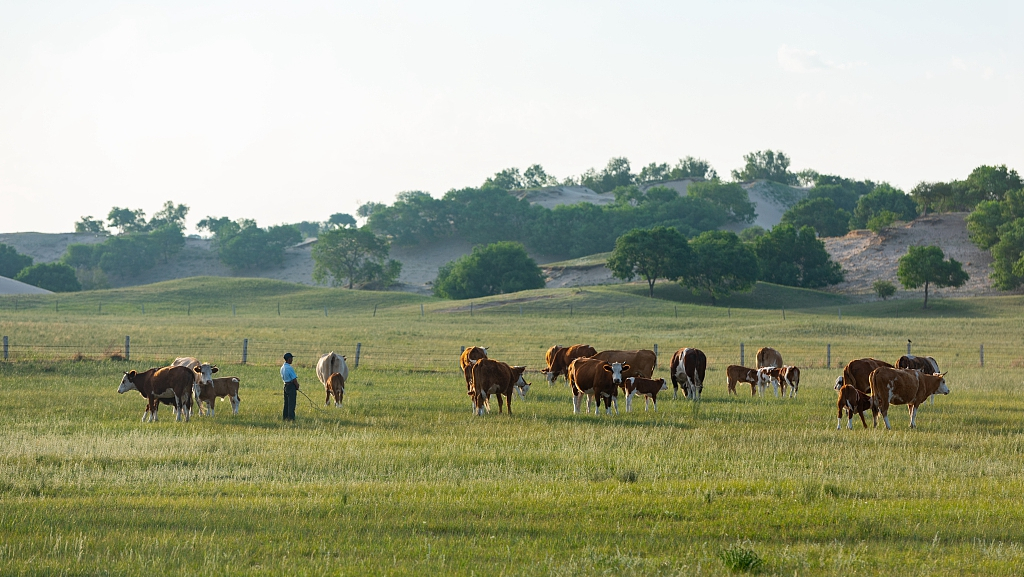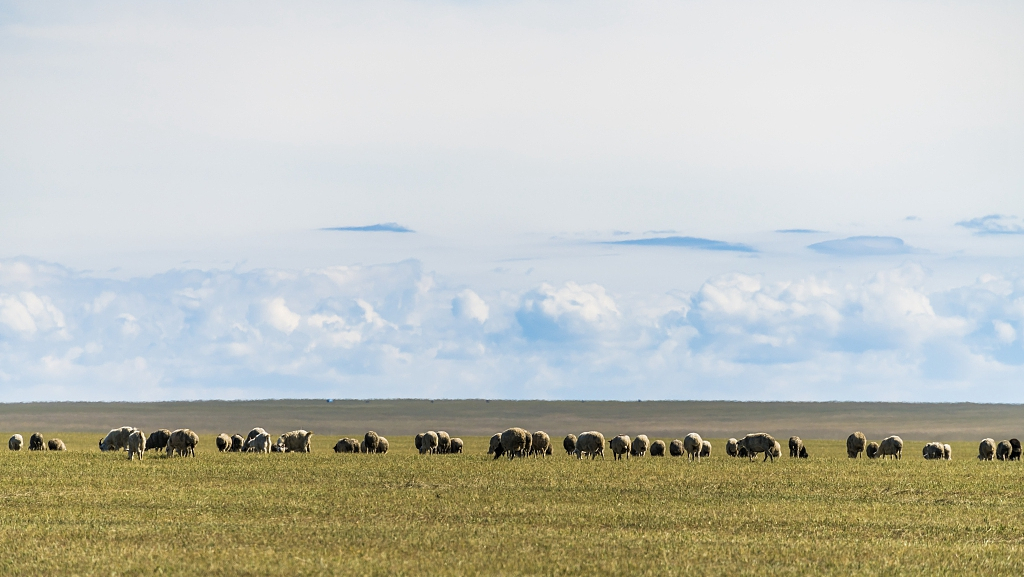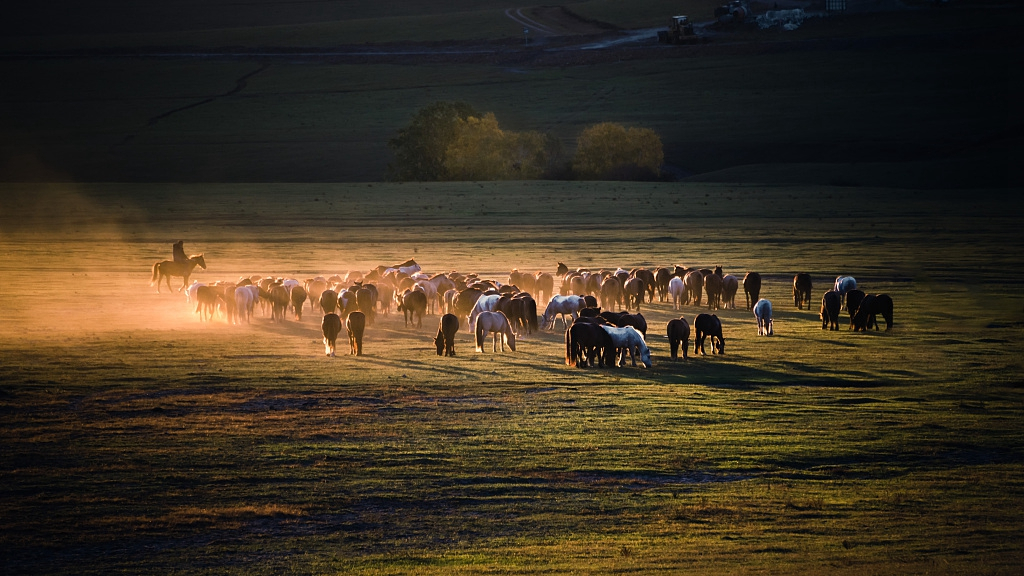The grassland surrounding Tamerlane's hometown on a large prairie in the Inner Mongolia Autonomous Region was once so degraded, the herder struggled to graze his animals even during summer.
"The grassland of the family was much smaller a dozen years ago, but there were twice as many sheep to graze as now. Overgrazing had deteriorated the grassland," said the 60-year-old herdsman who lives in Altanhil, East Ujimqin Banner, Xilin Gol, in Inner Mongolia.
Back then, people in Altanhil struggled to find large tracts of land with sufficient grass for their animals, Tamerlane said. Natural grassland covers 74 percent of Inner Mongolia's land area and more than one fifth of China's total. But, large swathes have long suffered from deterioration, desertification and raging sandstorms.

Herders are the beneficiaries of better protected grassland in the Inner Mongolia Autonomous Region. /VCG Photo
Herders are the beneficiaries of better protected grassland in the Inner Mongolia Autonomous Region. /VCG Photo
The ecological role of grassland is often underestimated, according to Liang Cunzhu, a professor at the School of Ecology and Environment of Inner Mongolia University. "Grassland has dual functions, both productive and ecological," he said.
For Liang, it was the lack of awareness about the function of grassland as an ecological barrier that contributed to the overgrazing problem.
But thanks to a series of proposals put forward by the China Democratic League (CDL), the grassland along China's border with Mongolia has greatly improved.

A flock of sheep graze in the distance. /VCG Photo
A flock of sheep graze in the distance. /VCG Photo
The CDL's Inner Mongolia Autonomous Regional Committee devised the action plan after field surveys and research work conducted by its members since 2003 identified overgrazing as the root cause of ecological problems.
The committee proposed strengthening protection of grassland and compensating herders and farmers for not overgrazing, a move that was supported by the State Council. In 2012, the subsidies extended to 268 county-level pasture areas across the country, with herders compensated for letting their grassland go fallow. A new round of incentives was introduced in 2016, with 18.8 billion yuan in subsidies granted every year.

A herder and his horses on the Bashang Grassland in the Inner Mongolia Autonomous Region. /VCG Photo
A herder and his horses on the Bashang Grassland in the Inner Mongolia Autonomous Region. /VCG Photo
Temur now grazes about 1,000 sheep on his 1,700 hectares of grassland. Although the number of livestock is only one fifth of what it once was, his annual income is not affected as he receives a 45 yuan ($6.35) annual subsidy for each hectare he does not graze his animals on.
"The herders are the beneficiaries too, as we have more flowers and grass on the grassland and fewer sandstorms," he said, noting that nature is the greatest protector of herders' livelihoods.
The vegetation coverage rate in Inner Mongolia reached 44 percent last year, a 14 percent increase from 2000, according to the regional bureau of forestry and grassland. A total of 68 million hectares of grassland in the region has achieved a forage-livestock balance, with grazing banned for a month every spring.
The CDL committee now wants to construct better ecological barriers, said its chief Dong Hengyu.
(All images via VCG)
(If you want to contribute and have specific expertise, please contact us at nature@cgtn.com.)
Source(s): Xinhua News Agency